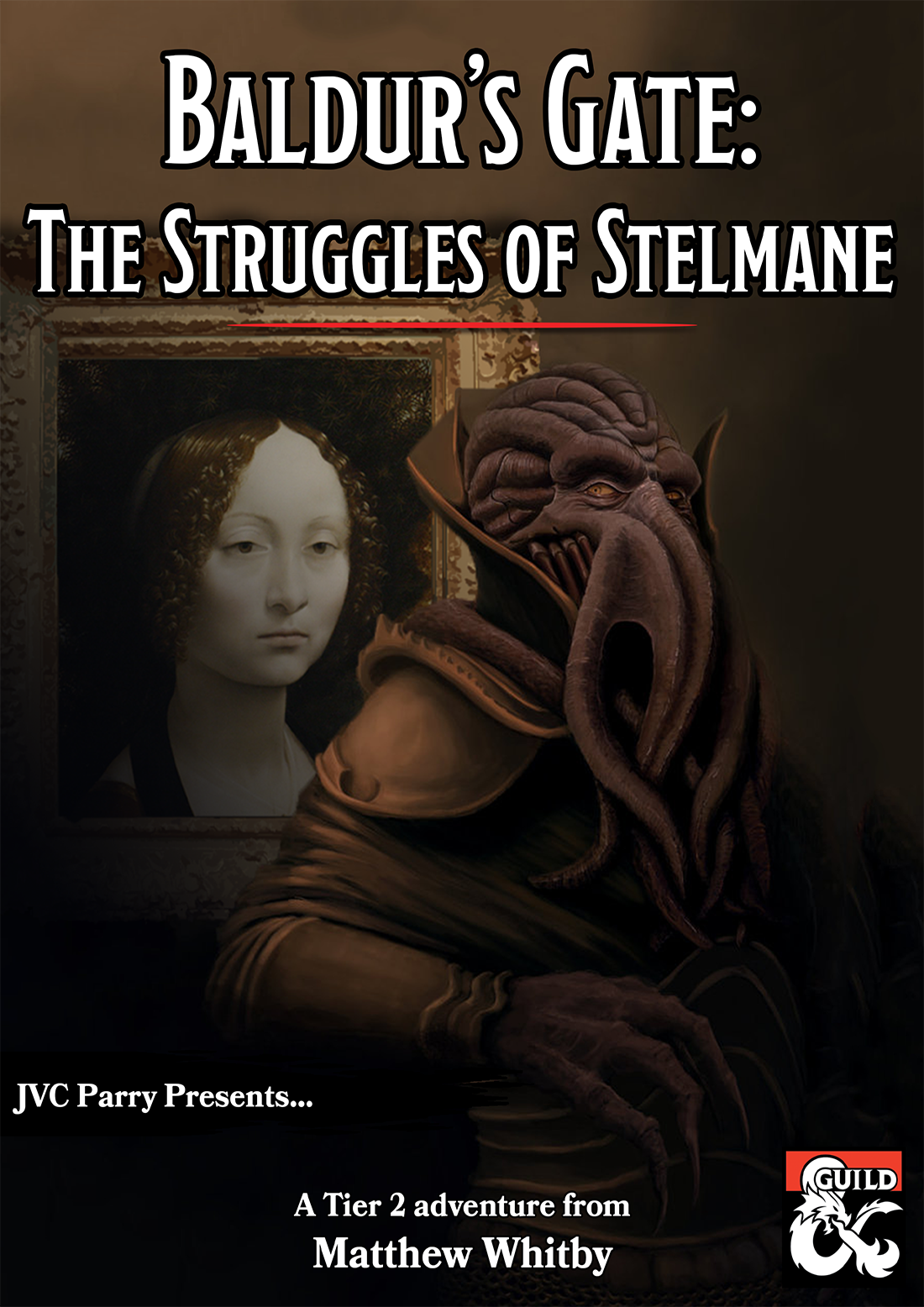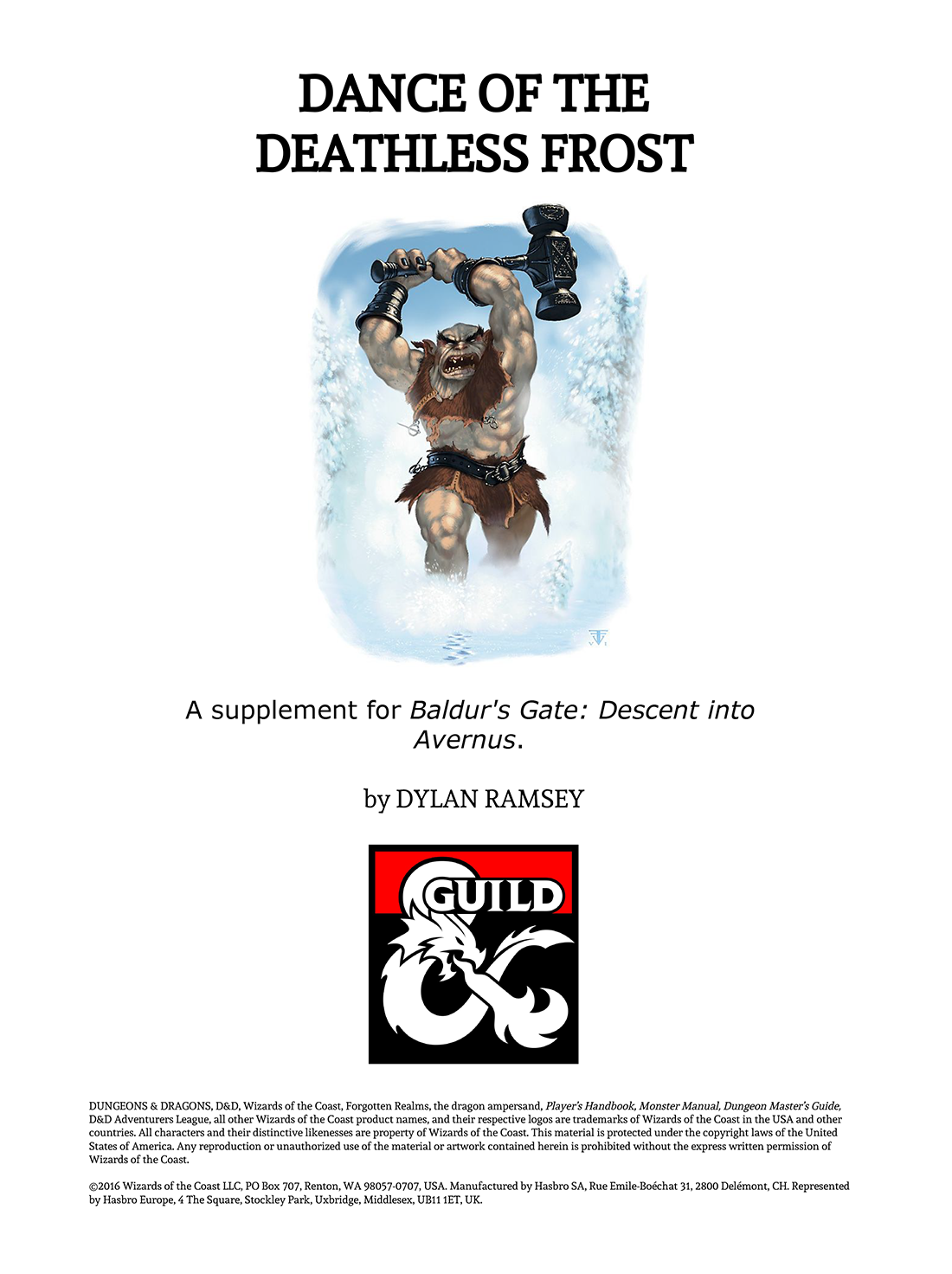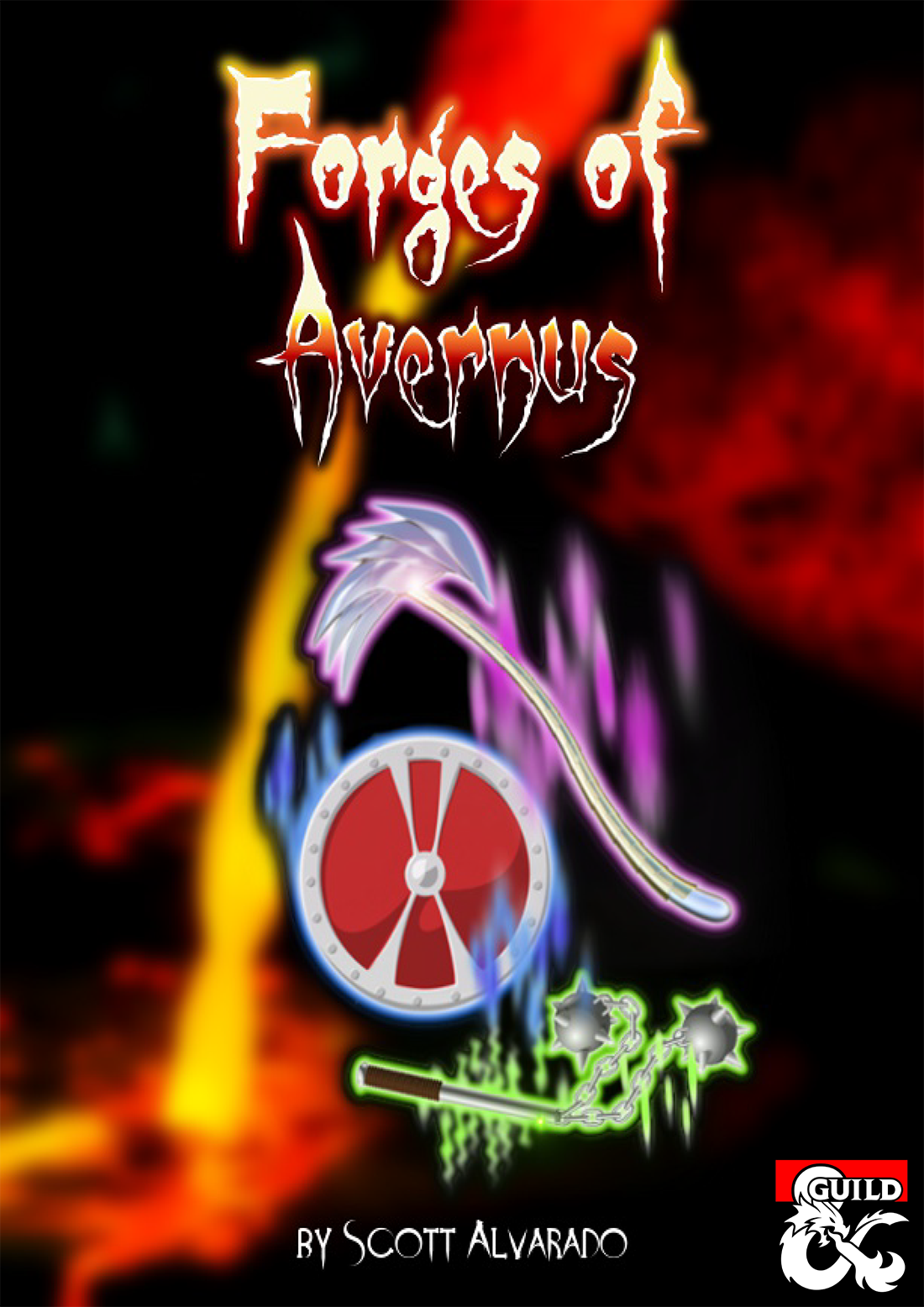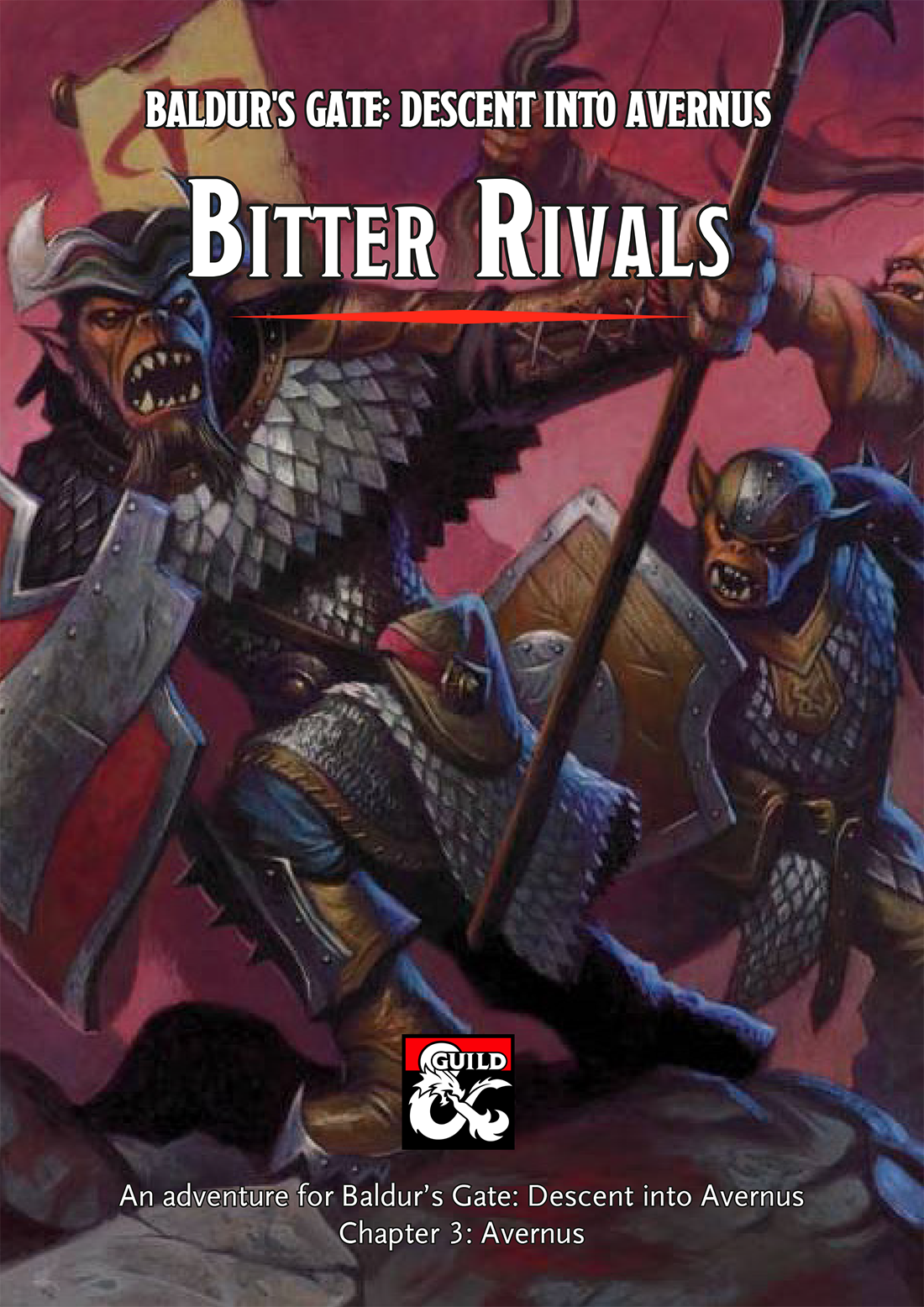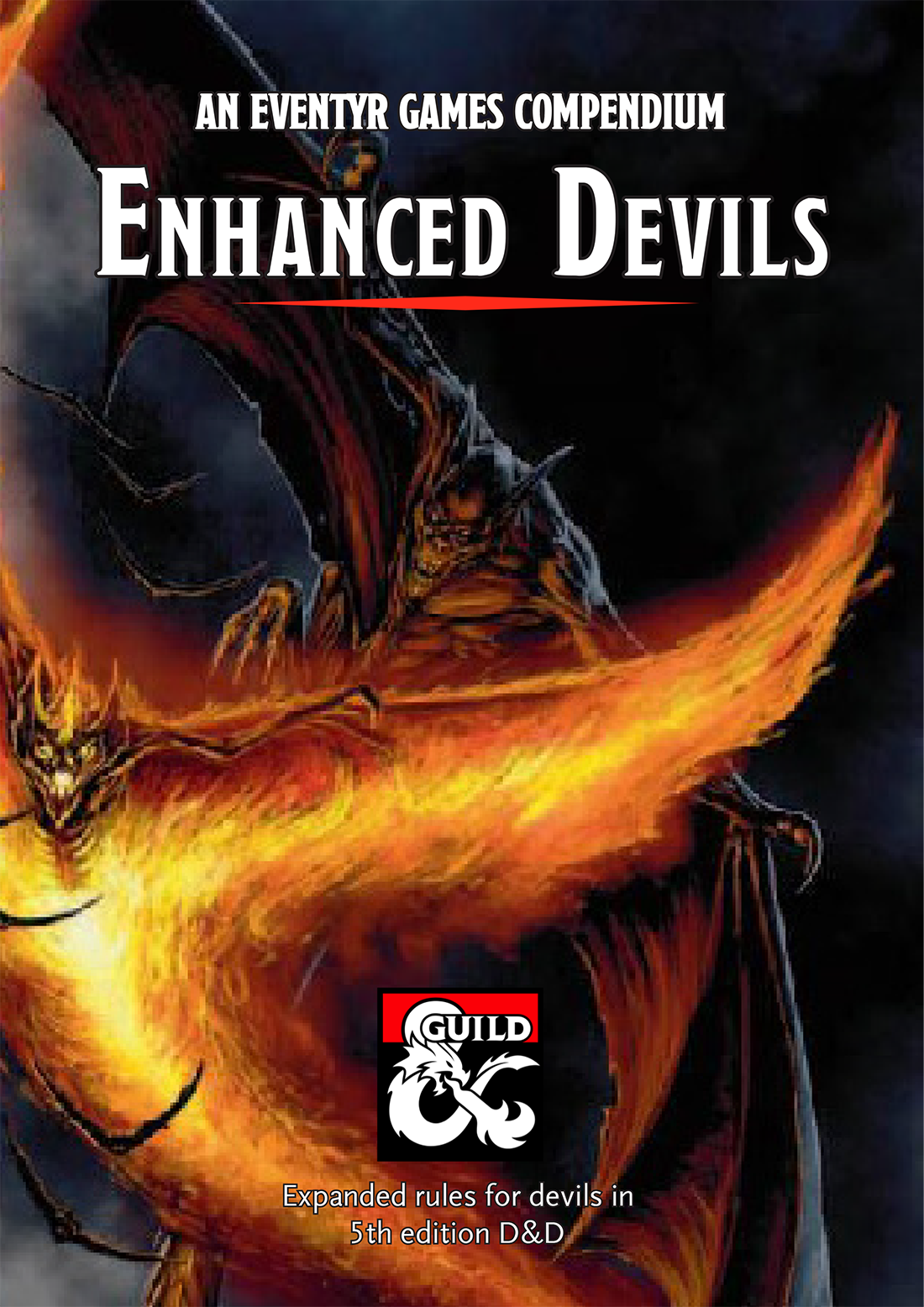DISCUSSING:
In the Shadow of the Spire – Session 23A: Let Slip the Dogs of Hell
“WHO DARES TO VIOLATE THIS SANCTUARY OF CHAOS?”
They whirled around and looked up. Above, on a balcony in the tower directly above them, a demon with a goat-like head was floating several feet off the ground. It carried a vicious looking axe with a blade that gleamed in the sun.
Although this is not well-represented in the campaign journal, I actually ended Session 22 in a cliffhanger: The demon showed up, shouted, “Who dares?!”, and that’s where I wrapped up the night.
Cliffhangers are great. There are all kinds of cliffhangers, but two significant ones for RPGs are unresolved peril and the escalating bang.
Unresolved peril is fairly self-explanatory: The PCs — or people/things they care about — are in a state of jeopardy and we “leave them hanging,” uncertain of the outcome. The anticipation of the cliffhanger is based on desperately wanting to know the fate of the things we care about.
I discuss escalating bangs in The Art of Pacing. This is the point in a scene where the stakes are either precipitously raised to a whole new level and/or when the stakes you thought the scene were about abruptly change into something completely different. If you cut more or less on the exact moment that the escalating bang is revealed, the anticipation of the cliffhanger is based on being uncertain about where the scene is going and also the eagerness of wanting to take action in the new reality presented by the bang.
This particular cliffhanger is basically a combination of both types: The escalating bang of the demon’s arrival has both changed the nature of the scene and put the PCs in jeopardy.
(As I point out in Part 5 of The Art of Pacing, cliffhangers also don’t always have to come at the end of a session: If the group has split up, you can create numerous cliffhangers by cutting from one group to another.)
“Anticipation” is a key word here. What makes the cliffhanger desirable as a dramatic technique is that the players immediately want to keep playing, while simultaneously denying that to them. It’s a great way of ending a session, because it makes the players eager for the next session.
ENDING THE SESSION
Cliffhangers are not the only effective way to end a session. At the end of Session 21, for example, we closed on the resolution of some pretty heavy stakes for the character of Dominic. Those significant character beats — particularly if the characters themselves are thinking deeply about how things turned out — are a good place for a session break because it lets the players live long in that moment.
In other cases, like the end of Session 19, you might want to break at the point where a scenario has reached a definitive conclusion. This helps to solidify a sense of accomplishment — the idea that a new milestone in the campaign has been reached. When you look back at a campaign, these milestones will chart out the course you’ve all taken together. (From a practical standpoint, this can also be a good place to wrap up for the night so that everyone — including you! — can have some time to think about what they want to do next.)
If you want to study different types of effective session endings, think about how other serialized forms of entertainment — television shows and comic books, for example — wrap up their installments. You’ll find a lot of different types of endings, and also a lot of variations within those types.
The real trick with an RPG, though, is finding that ending. Unlike a scriptwriter, you only have a limited amount of control over where the game session will take you and how fast it will take you there. That’s actually why I use the word “finding”: Whereas the scriptwriter can sculpt the ending they want, as a GM you need to instead be aware of when the ending happens and then actually end the session.
If you miss a potential ending, there probably won’t be another coming along for awhile. That’s when you’ll end up just kind of awkwardly cutting at some arbitrary point because you’ve run out of time.
THE ENDING WINDOW
To find an effective ending, you’ll first need to be aware when you’re in what I call the “ending window.” That’s the window of time at the end of the session in which it’s acceptable to say, “That’s all folks!” It doesn’t matter how perfect an ending a particular moment would be if it comes two hours into a four hour session. (Although that might be a good place to take a break.)
For me, in a four hour session, the ending window is generally from about 15 minutes before our scheduled end time to about 10 minutes after. (If I’m running for a group where the end time is hard-and-fast, it’s more like twenty to twenty-five minutes before the scheduled end of the session.) If I’m in that window or approaching that window, I know that I’m looking for an ending and can start framing and pacing the action accordingly.
I have a simple trick for staying aware of where I am in the session: A kitchen timer. Before the session starts, I simply set the timer to go off at our scheduled end time and put it discretely behind my screen. (It’s usually surrounded by a pool of dice.) I can then tell in a glance where we’re at: Three hours left. Two hours left. One hour left. Half an hour left. In the ending window.
Why not just use the timer on your phone? The timer on my phone generally needs to be checked – i.e., I have to turn on the screen. It also opens up the potential for other distractions in the form of notifications and the like. The kitchen timer, by contrast, just sits there in my peripheral vision. Not only can I check it with a flick of my eye, but I’ll periodically notice it throughout the session without having to actively think about checking the time. It keeps me tuned in.
Over time, you’ll find that your knowledge of where you are in a session will bring other benefits besides pacing for effective endings. Some of this is practical (like knowing when you should take a break). Others can be a little more ephemeral — you’ll start to develop a gut instinct for pacing; when you have time to let things play out and when you need to get the players moving with harder framing and higher stakes.
NEXT:
Campaign Journal: Session 23B – Running the Campaign: Dungeon Clues
In the Shadow of the Spire: Index




 The lock on the chest proved tricky, but Tee eventually managed to get it open. Inside she found bags of silver and gold coins, a thick candlestick of pure gold, and a finely-crafted headband of woven silver. Laying at the bottom chest was half of a circular disk of black obsidian with a bright red stone spiraled through it.
The lock on the chest proved tricky, but Tee eventually managed to get it open. Inside she found bags of silver and gold coins, a thick candlestick of pure gold, and a finely-crafted headband of woven silver. Laying at the bottom chest was half of a circular disk of black obsidian with a bright red stone spiraled through it.

